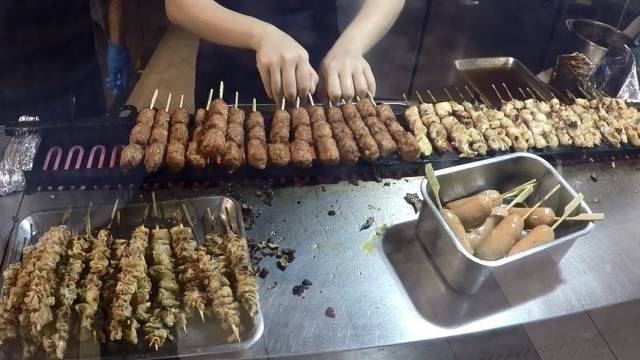

19:04
Apr 1, 2022
3
3
'https://www.youtube.com/channel/UCdNO3SSyxVGqW-xKmIVv9pQ/join www.settime2588.com www.facebook.com/settime2588 instragram: settime2588 www.twitter.com/settime2588 Singapore Street Food Handmade Carrot Cake, White and Black Min Chiang Kueh and Crispy Apam Balik. Peanut Pancake. Glutinous Kueh and More Sweet Cakes. Murtabak, Roti Prata and More Street Food from India in Singapore Yakitori Skewers from Japan in Singapore Yakitori is a Japanese type of skewered meat, as chicken, pork and more ( unagi, prawn,...) Its preparation involves skewering the meat with kushi , a type of skewer typically made of steel, bamboo, or similar materials. Afterwards, they are grilled over a charcoal fire. During or after cooking, the meat is typically seasoned with tare sauce or salt Also known as Apam Balik or Mee Chiang Kueh in Hokkien, peanut pancake is an old-fashioned breakfast food and all-day snack, common in Southeast Asia and originated from Peninsular Malaysia. It is usually sold at specialist roadside stalls throughout Brunei, Indonesia, Malaysia and Singapore. It is made by pouring batter on a flat griddle to make a large pancake. When cooked, roasted crushed peanut mixed with sugar is sprinkled all over the pancake. It is then folded over to create a half-moon and then cut into smaller pieces. Typically, other fillings like red bean and grated coconut are also available. Modern variants include cheese and chocolate. However, the most popular is still the original peanut version. This savoury carrot cake has no carrot, at least not of the orange variety. Instead, the core ingredients of the cake are rice flour and white radish which some call white carrot. The mixture is steamed, then cut into cubes and fried with garlic, eggs and preserved radish called \'chai poh\'. Commonly referred to as \'chai tow kway\' in the Teochew dialect, these smooth and soft fried rice cakes can be found in almost every hawker centre. It is served black (fried with sweet dark soya sauce) or white (original). The simple dish has its origins in Southern China’s Chaoshan province. There, it is known as \'chao gao guo\' (fried starch cake) which is made mainly with rice flour. Fish sauce and black sweetened soya sauce are used to marinate the rice cake before it is cut and fried with eggs, oysters and prawns. Brought over to Singapore by Teochew immigrants, it was known as \'char kway\' (fried rice cake), which was simply cubes of rice cakes fried with dark soya sauce. Teochew hawker Ng Soik Theng claims to be the first to have called this dish \'chai tow kway\' in the 1960s when she added white radish to it. Another hawker, Lau Goh, is said to have popularised the white version Unlike most stalls that use factory-made radish cakes, Guan Hin Handmade Carrot Cake makes them from scratch daily. This explains why the bits of kueh are significantly chunkier, softer, and fluffier. With 51 years of experience, the 86-year-old stall owner dishes out a plate of wok hei-filled Black/WhiteCarrot Cake topped with a bountiful amount of chye poh. Seen in Geylang Bahru Hawker Centre, Singapore'See also:



comments